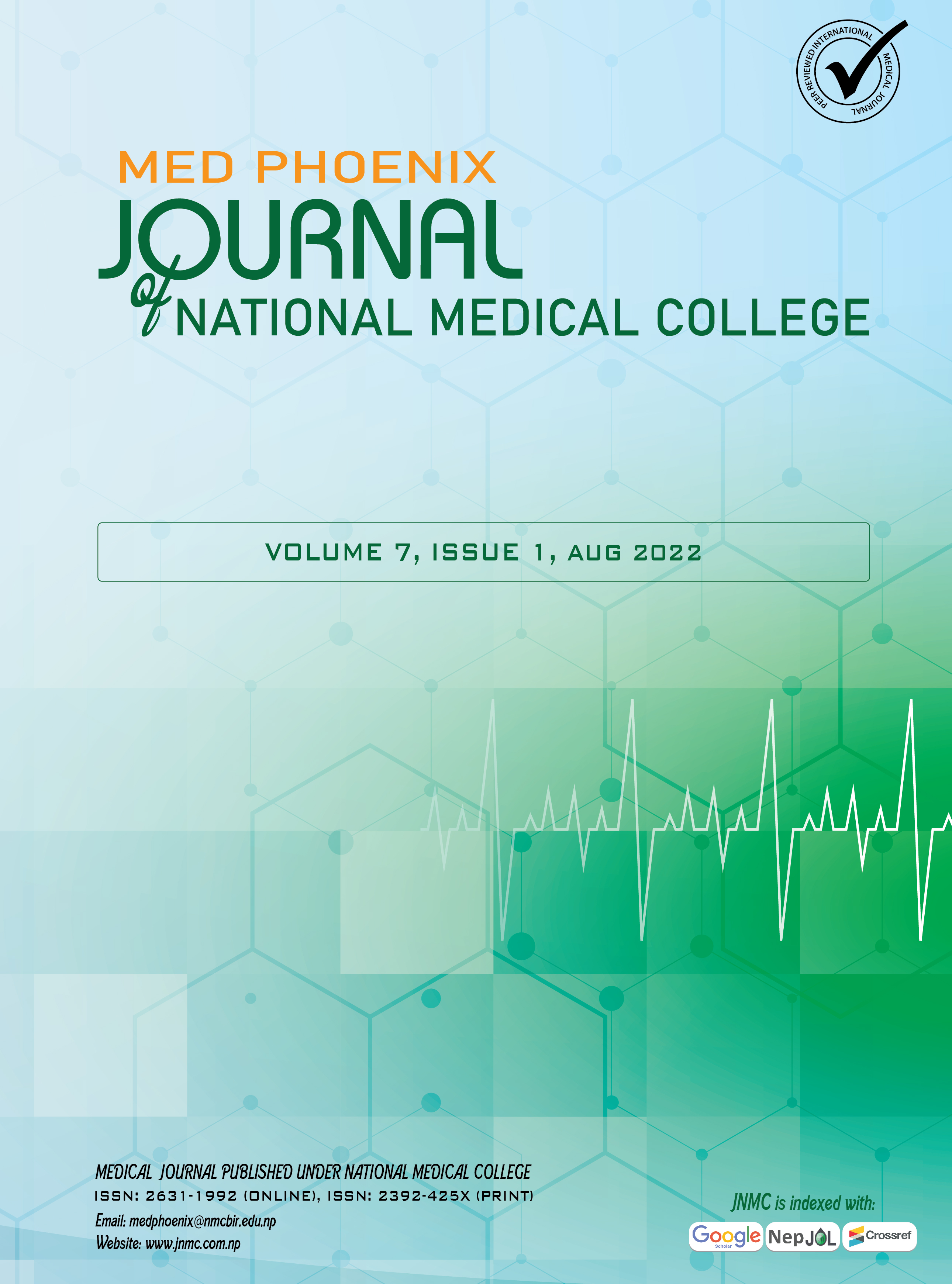Anthropometric Study of External Ear: A Comparative Study
DOI:
https://doi.org/10.3126/medphoenix.v7i1.43195Keywords:
Anthropometry, External ear, Sex determinationAbstract
Introduction: Ear is the most defining feature of the face and its structure shows the signs of age and sex. The external ears consist of the auricle and the external acoustic meatus. This study was specifically under taken to study the variations in the auricle dimensions, specially height and width, amongst Nepalese medical and nursing students and compare them.
Materials and Methods: This study was conducted on medical and nursing students of National Medical College, Birgunj, Nepal, with no evidence of congenital ear anomalies or previous ear surgeries. The study consisted of 110 females and 110 males, aged 18–25 years.
Results: The descriptive statistics of the ear variables evaluated and measured on both right and left sides. The ear length ranged from 6.31- 6.30 cm with the right ear length being significantly larger than the left ear length (p=0.010). Similarly, the right ear breadth was significantly wider in comparison to the left ear breadth, range from 3.39- 3. 38 cm (p=0.084). The lobular length range 2.38- 2.36 cm (p=0.001) and the lobular breadth range 1.96- 1.93 cm (p=0.000) which were also larger in the right ear compared with the left ear and the differences reached the level of statistically significant.
Conclusion: The ear anthropometric measurements of male students showed higher value when compared to the female nursing students. These results support the findings that the sexual dimorphism does exit and showed the statistically significant differences between the sexes. The length of the ear was found to be higher when compared to the width of the ear in both sexes.
Downloads
Downloads
Published
How to Cite
Issue
Section
License
Copyright (c) 2022 Med Phoenix

This work is licensed under a Creative Commons Attribution 4.0 International License.
This license enables reusers to distribute, remix, adapt, and build upon the material in any medium or format, so long as attribution is given to the creator.
Copyright on any research article is transferred in full to MED PHOENIX upon publication. The copyright transfer includes the right to reproduce and distribute the article in any form of reproduction (printing, electronic media or any other form).




